The best dry bags: keep your gear bone dry during adventures on land and water
Protect your kit with the best dry bags out there, including daypacks, backpack liners, kitbags, map cases, and swim floats

The virtue of the best dry bags is their simplicity; they’re bags, you put stuff inside them, the stuff stays dry. Well-chosen, fully waterproof dry bags can make the difference between a successful, comfortable expedition and a sodden disaster, while in extreme situations they might even be a life-saver.
Our reviewers have revelled in putting this varied menu of the very best dry bags to the test in wet conditions and on amphibious adventures. Any product included here has stood up to the challenge and kept the kit within dry.
Not all dry bags are created equal and there are plenty of different kinds to choose from. We kick things off with the best backpack-style dry bags, which can be worn in the same way as a hiking backpack. After this, we move onto large, medium and small dry bags that are simpler in terms of design but just as effective at keeping the drink at bay. We round things up with an excellent map case and a tow float.
Sea to Summit's dry bags are among the best and we rate the Flow 35L Dry Pack as the finest dry backpack, while the protection of their Ultra-Sil Dry Bag 35L is hard to beat when it comes to a standard dry pack.
The best dry bags
You can trust Advnture
Best backpack-style dry bags
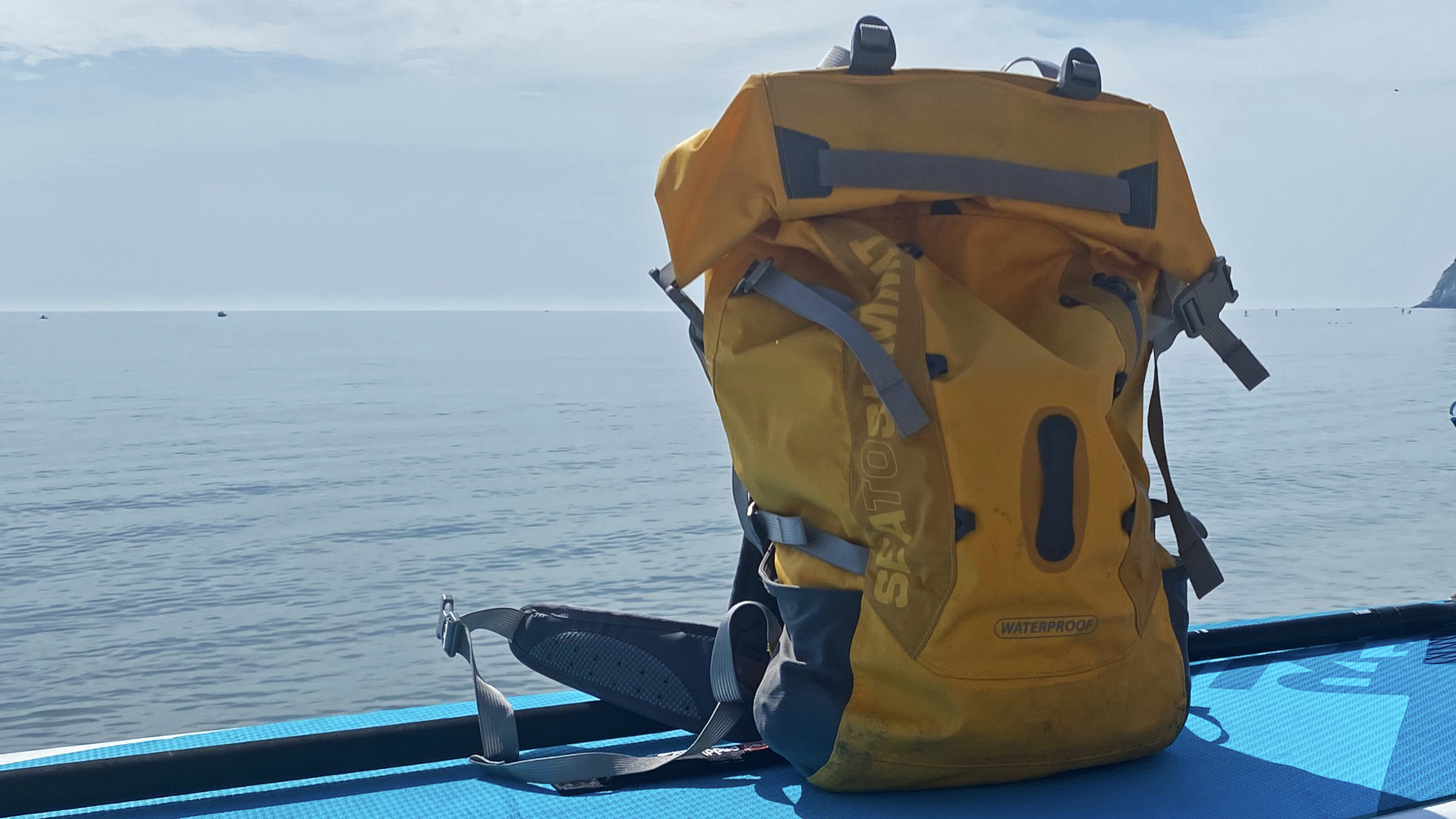
Specifications
Reasons to buy
Reasons to avoid
The Flow Dry Pack from Sea to Summit is an ultra-versatile bag that can be used to keep kit completely dry during one- or two-day treks in potentially torrential rain and snow, or employed for coasteering and canyoning adventures, or to act as a multifunctional storage option when you’re out paddling a kayak, canoe or stand-up paddleboard.
Made with TPU laminated, 420D Nylon, the main compartment is completely waterproof. With a generous 35-litre capacity, the top rolls down like a dry bag, and then clips into buckles on the side to complete the waterproof seal.
Importantly, the harness is excellent, with really comfortable shoulder straps made from foam and breathable mesh, a sternum strap and a great waist belt. One gripe we do have is that the pack sits directly on your back with no features to create any airflow – aside from a large inlaid Sea to Summit logo, which doesn’t cut the mustard – so it can be a bit sweaty to wear. There are some other negatives – including the price tag, which is very high, and the fact that no recycled materials have been used in its construction – but this is an excellent pack that we expect to last for many years.
Read our full Sea to Summit Flow 35L Dry Pack review
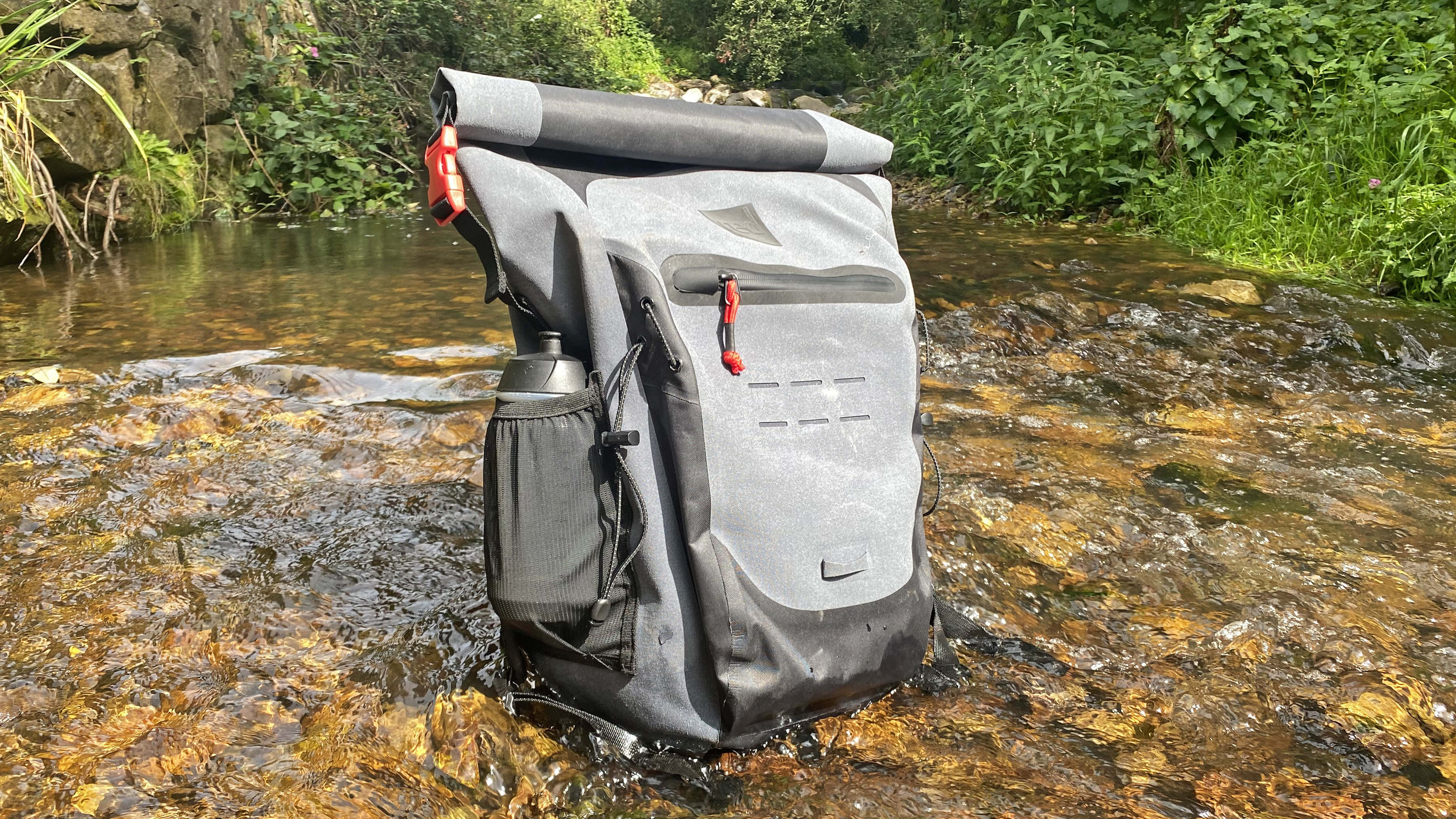
Specifications
Reasons to buy
Reasons to avoid
Made entirely from recycled plastic bottles, this generously proportioned daypack from fully certified B-corp British company Red Original (most famous for producing some of the best stand-up paddleboards around) has a fully waterproof 30-litre main compartment that will keep your gear safe and dry during even the most torrential downpours.
The pack can be closed like a dry bag (by rolling the top over at least three times and clipping the ends together), or you can roll the top down as per above, and use the side clips. These options make it possible to compress the bag, or use it to its full 30-litre extent, depending on how much kit you’re hauling. It also provides a couple of alternative ways to attach the bag to a boat or board, if you’re taking out on the water in a canoe, kayak or on a SUP – all of which it is perfectly possible to do.
On test, we found it to be a robustly built pack, one which we expect will last for many years of pretty heavy use. This bag is really in its element in and around water, but it’s a decent pack for use on drier trails too.
Read our full Red Original Waterproof Backpack 30L review

Specifications
Reasons to buy
Reasons to avoid
With 40 liters of roll-top secured dry storage and another 20 liters of overflow space held closed with a drawstring and straps, Mustang Survival’s Highwater 60L lets you divide wet and dirty kit from clean and dry gear, which is super handy in so many scenarios, whether you’re camping, canoeing or just hanging out at the beach or riverside.
On test, we found the bag to be surprisingly light, considering its PVC-free ripstop body is rugged enough to be tossed and chucked around. It’s particularly good for portaging, with shoulder straps meaning you can cart it hands-free, while also carrying a canoe/kayak. Four grab handles make it easy to swing on-board or overhead into a roof box. The harness isn’t removable, but while empty the bag is still low profile.
Read our full Mustang Highwater 60L Gear Hauler review
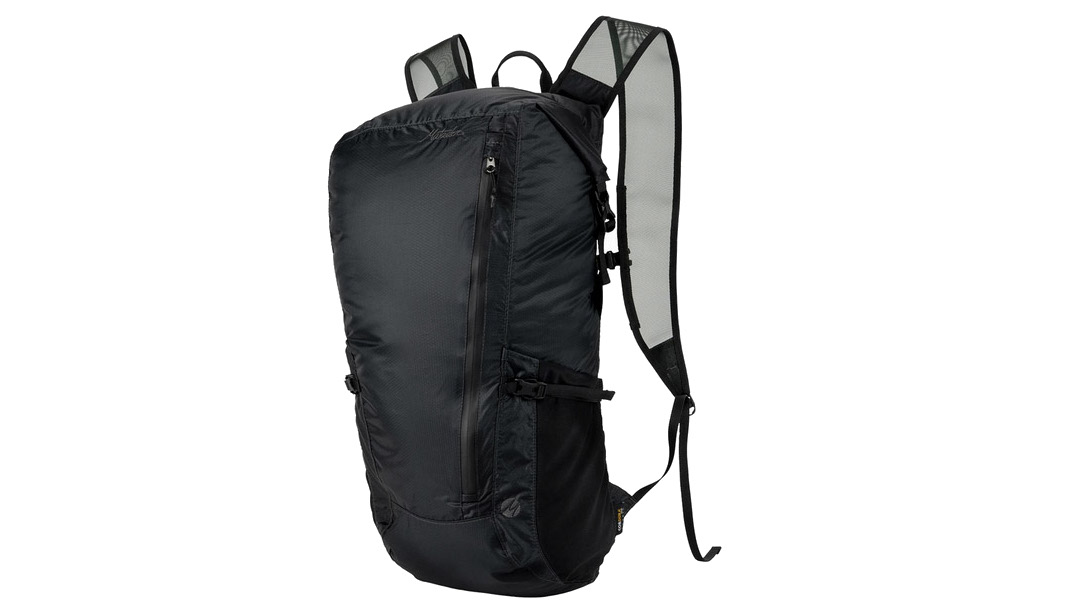
Specifications
Reasons to buy
Reasons to avoid
The magic of this fully featured waterproof backpack is that it packs down to the size of a soda can, which we found wonderfully useful on test. Its packability makes it a superb dry bag for travel, or backpacking / bikepacking, or even just for keeping in the car for a quick run into the grocery store anytime. Made from 30D Cordura ripstop nylon, the seam-sealed bag has a silky-feeling silicone waterproof coating, so it’s easy to stuff into a small space when empty. A Hypalon rolltop closure on the 24-liter main compartment keeps rain and river water at bay, whether you’re walking or canoeing.
You can also use this clever little dry bag as a summit pack or daypack for a side trip from the main trail, or during a little peak-bagging mission. The side pockets hold 1L water bottles. Contoured, mesh shoulder straps make this waterproof pack comfortable to carry, so long as you don’t over pack it. The dry bag backpack comes in a detachable rolltop storage bag, which you can use to safely stash other stuff (phone, wallet, keys) when it’s not storing the pack.
Read our full Matador Freerain Waterproof 24L Backpack review
Best large dry bags
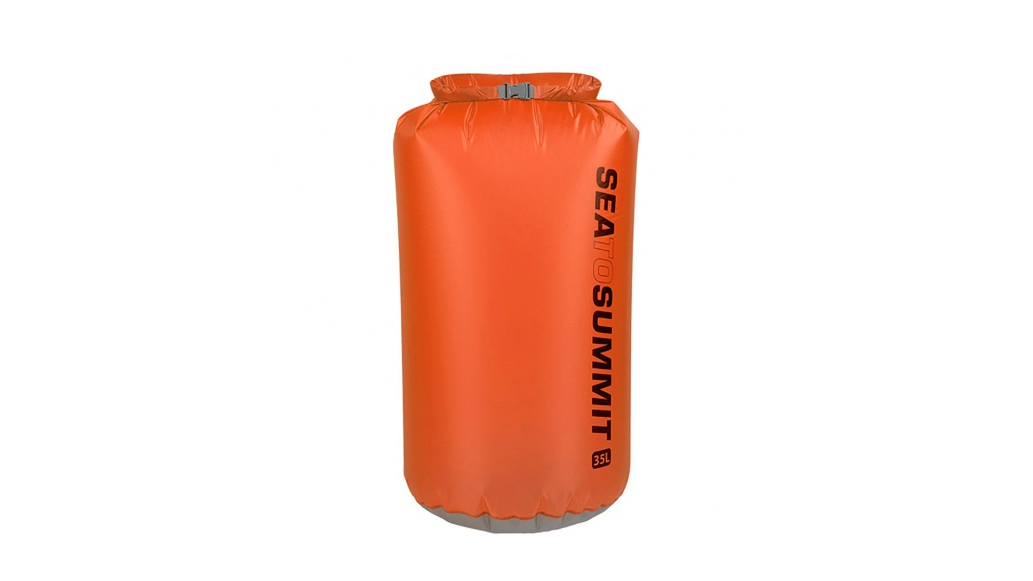
5. Sea to Summit Ultra-Sil Dry Bag 35L
Our expert review:
Specifications
Reasons to buy
Reasons to avoid
At only 65g/2.2oz, this fully waterproof 35L dry bag can swallow up most of the gear you’d want to keep dry even on a multi-day trip for almost no weight penalty, and there’s a lot to be said for using this dry bag as a liner in those packs you already own, rather than buying a heavier, less versatile waterproof backpack. We found that the wide mouth and super-slippery fabric makes it simple to fill, even with bulky clothing, plus it was easy to slide in and out of a backpack. If you’re a lightweight bivvy or hammock camper, the Ultra-Sil bag can take day clothing and other items to double your weatherproof storage at night.
The light fabric is almost translucent, allowing you to see the rough outlines and basic colours of the contents, which is often enough to locate gear inside. Sea to Summit also offer this bag in multiple other sizes, including 20L, 13L, 8L, 4L and 2L, all of which come in very handy for separating the overall contents of your backpack (which you can colour code if you’re so minded, so you can quickly and easily locate items).
Best medium dry bags
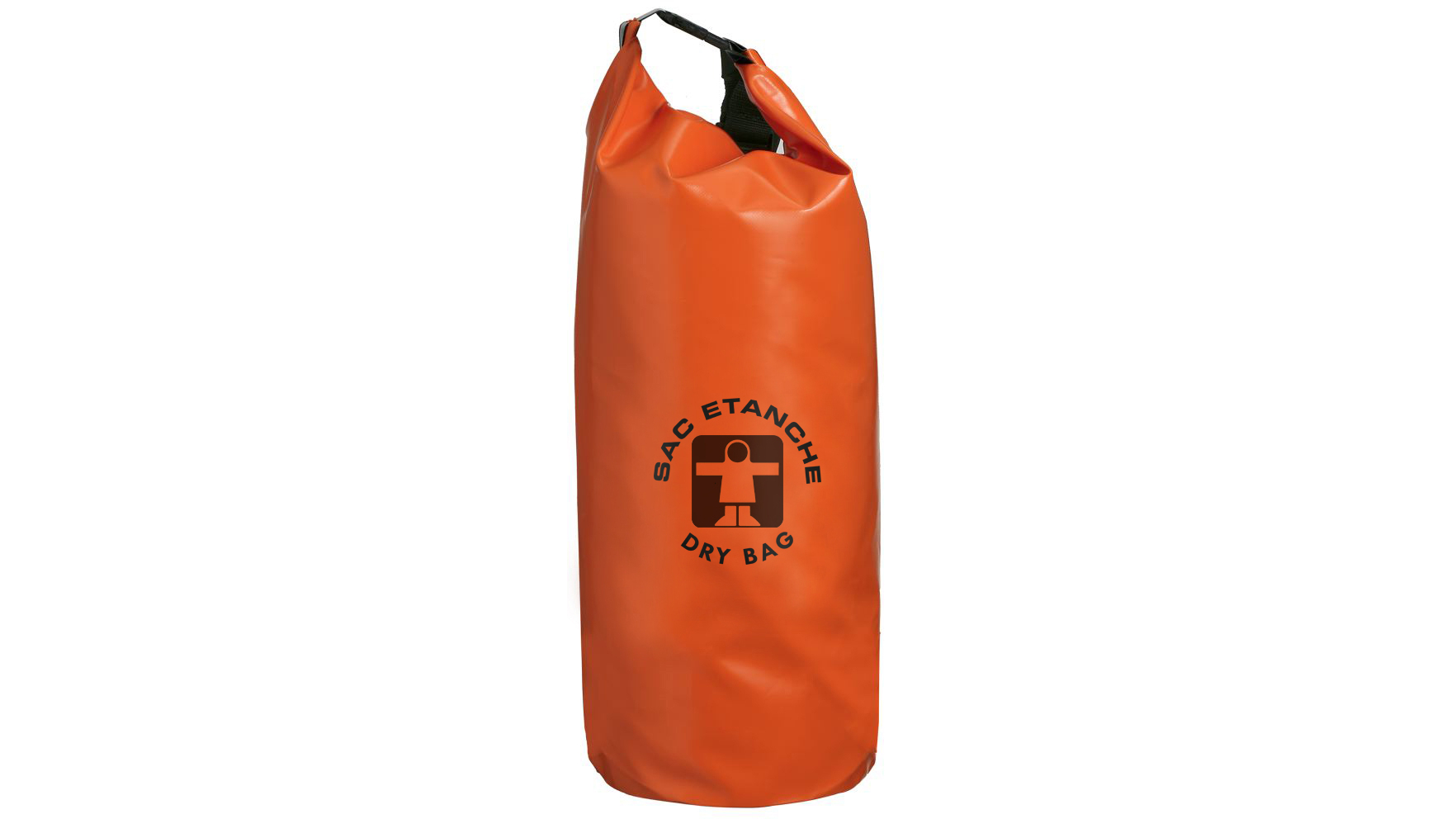
6. Guy Cotten Waterproof Bag No 1
Specifications
Reasons to buy
Reasons to avoid
French company Guy Cotten make heavyduty wet-weather gear used by trawlermen, forestry workers and other outdoor professionals who appreciate simplicity and dependability. The No 1 bag, second smallest in a range of six kit bag sizes, is practical as a tough grab-bag that can be filled quickly, slung over a shoulder and taken into the wettest conditions.
Though, like all manufacturers, the company counsels against full immersion of their dry bags, I used a larger sized Guy Cotten bag exposed on the rear deck of a sea kayak for three months without leaks. The adjustable strap can be shortened into a carry handle, used to hang the bag clear of the ground or deck, or for the stylish, lengthened for the on-the-shoulder look of a clipper sailor heading for shore leave.
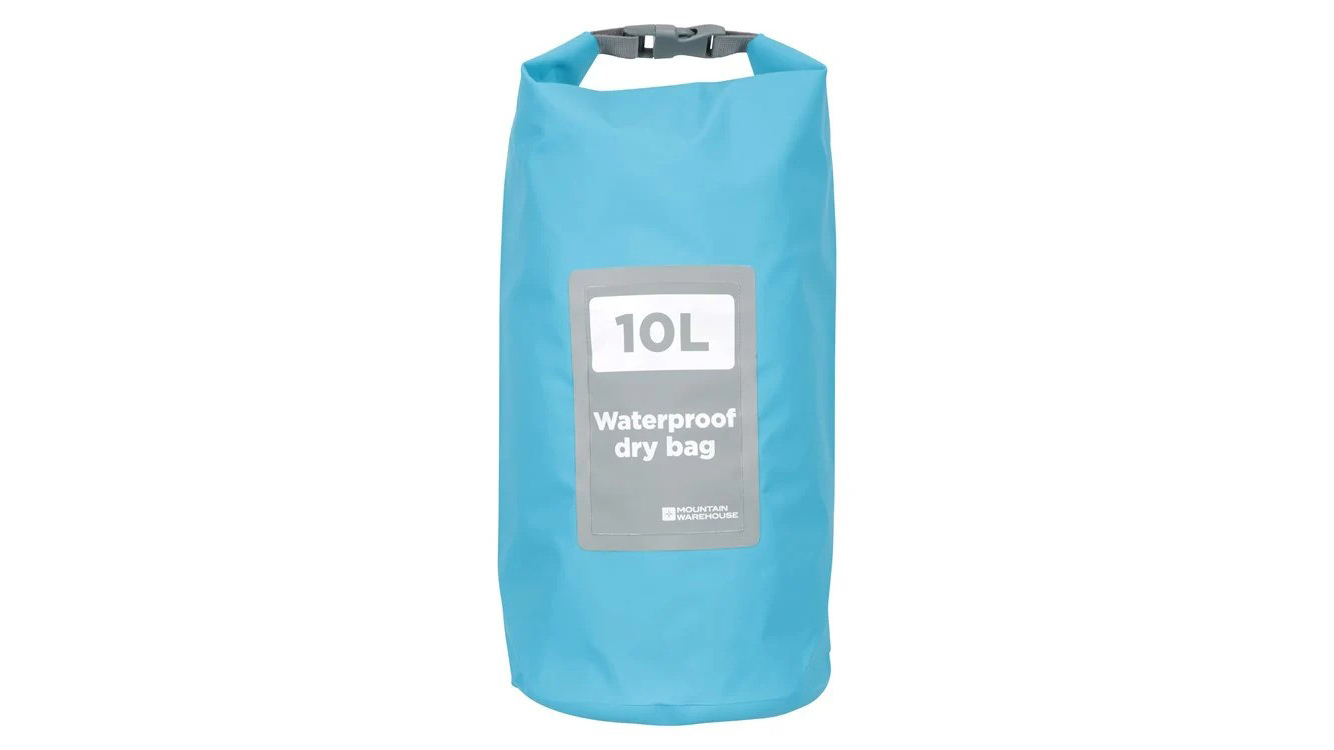
7. Mountain Warehouse PVC Dry Bag 10L
Our expert review:
Specifications
Reasons to buy
Reasons to avoid
We found this to be a tough, practical bag ideally sized for carrying essential kit when on the move in wet conditions. Used in the cockpit of a kayak or as a waterproof ‘extras’ bag tucked under the straps of a backpack this dry bag’s volume can swallow up warm layers, snacks and other sundries. Fold a map right and hold it against the clear window with a fleece or something bulky and you’ve waterproofed your OS Explorer.
That full length transparent panel and the generous width of the bag’s cylinder shape make it easy to locate a pair of gloves, say, and extract them without having to empty out all the bag’s contents – a real plus out on the water or while scrambling around in the rain or snow. We thought that the lack of a tie-down D-ring or two was a disadvantage in water sports but there’s a slot in the roll-over buckle fastening which is just wide enough to take a lanyard. Also available in 5L size.
Best small dry bags
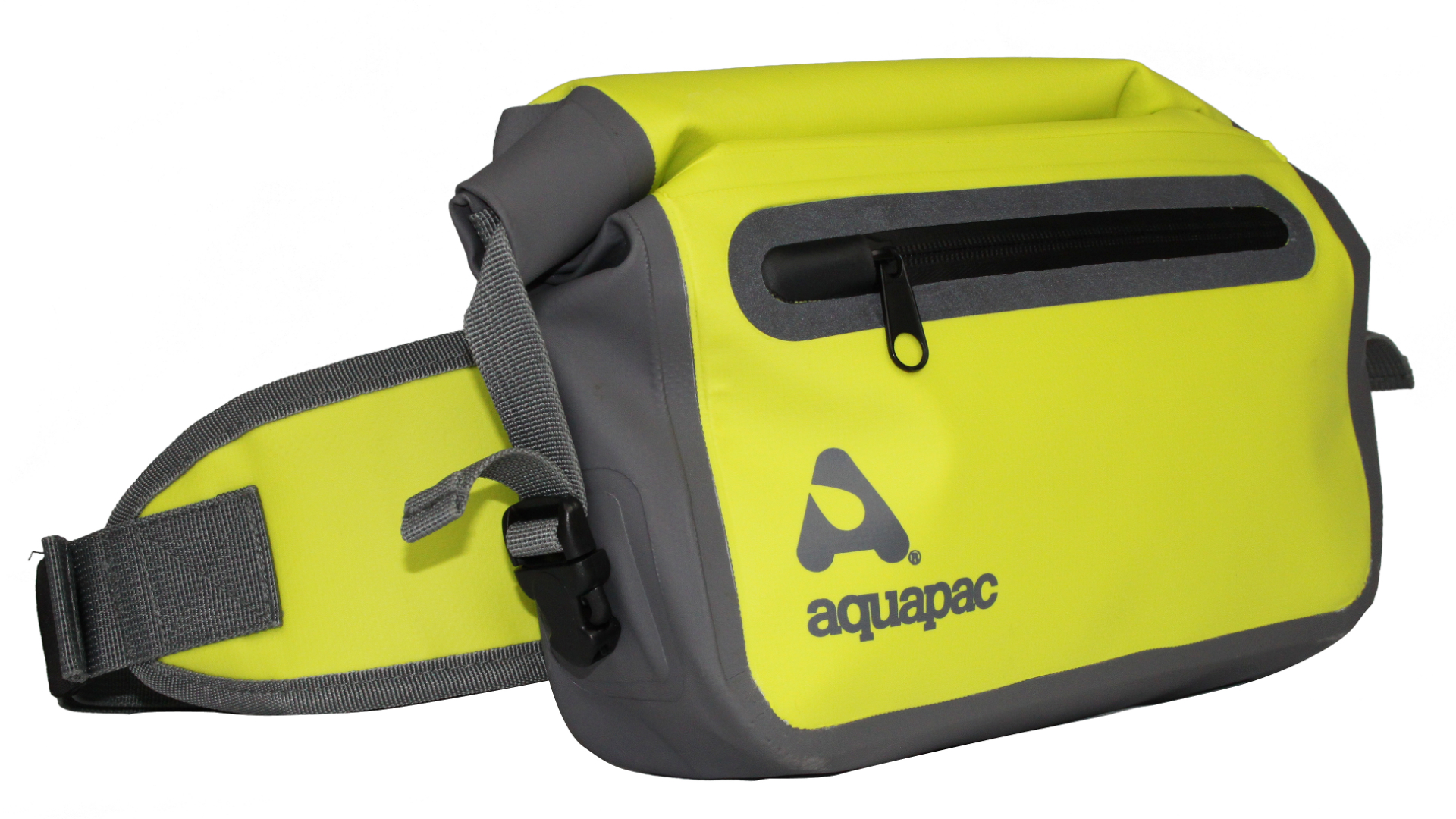
8. Aquapac Trailproof Waterproof Waist Pack
Specifications
Reasons to buy
Reasons to avoid
A generous 3L pack on a comfortable padded waistbelt keeps essentials to hand when on the water, making this good for SUPers, sailors, kayakers and canoeists. On land, it’s ideal for day walks and wet-weather cycling – where I found it really useful. The belt clip is easy to slacken off, even with gloved or cold fingers, allowing the Aquapac Trailproof to be worn at the back and swivelled round to the front when its contents are needed. Kayakers might find it awkward worn as a waistpack in a tight cockpit, but the snap-buckle belt can be used to fasten the Aquapac Trailproof to tie-ons.
The colours are bright but make it hard to lose or forget the waistpack if you’ve taken it off at a beach or trailside stop. As always if full immersion seems likely double-bagging any vulnerable items is still advised – especially as the zip is not rated for underwater/submersible use, but rather for spray, splashing and water jets (official rating IPX6), so it could fail if you took a heavy tumble from a SUP board, or went for a dramatic swim while kayaking or canoeing. Aquapac’s long manufacturing experience shows in small details – a key clip, inner zipped pouch and the heft of the fabric and fittings.
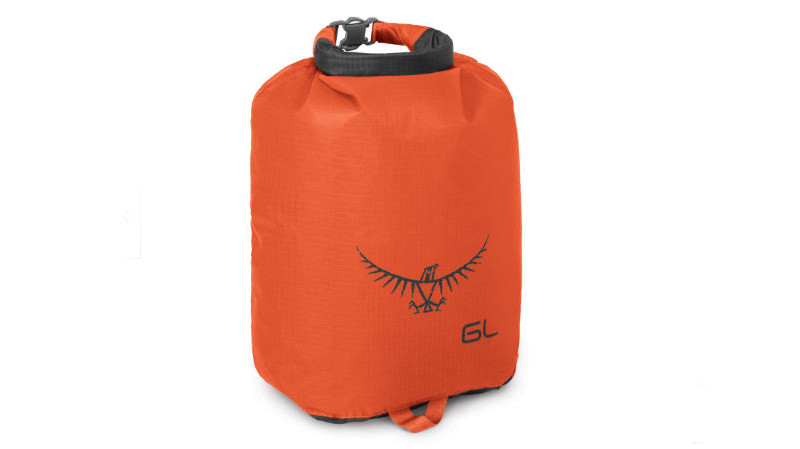
9. Osprey Ultralight Dry Sack 6L
Our expert review:
Specifications
Reasons to buy
Reasons to avoid
A system of light dry bags in a variety of sizes and colours are key to protecting and organizing kit inside larger bags. Osprey’s Ultralights range from 1.5L through 3L, 6L, 12L, 20L and 30L sizes, and come in three different – and bright – colours. On test, we found that this makes it easy to select a handful of different sizes for varied storage needs and colour code them for easy identification of their contents.
The 6L, which we have been testing, is an optimum-sized general-purpose bag, small enough to keep in a pocket but big enough to take several small items at one time. A D-ring at the mouth and a tab at the base are useful design features, the fabric is thin enough to make out the bag’s contents without opening or emptying it, and the rectangular block shape makes for efficient packing.
Best map case dry bag
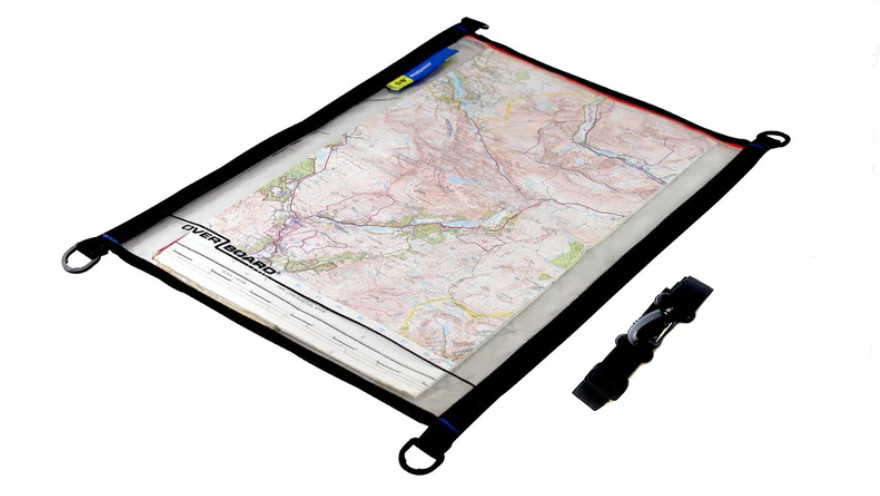
10. Overboard Large Map Case
Our expert review:
Specifications
Reasons to buy
Reasons to avoid
Designed for easy map and chart reading in the outdoors in all weathers, this transparent, flat waterproof case is made from flexible TPU but we found it still had weight and enough stiffness to ease map handling when out in the highest winds. Whether orienteering, routefinding, navigating on water or backing up a GPS unit, the map case’s A3 size means that a 1:25 000 map can be folded to show an area some 4km by 6km on each side, giving a lot of walking, sailing or paddling representation before having to refold the map or chart.
Chinagraph pencils (grease pens) can be used to write route notes directly onto the plastic and wiped off later. It’s critical to fully close the ziplock for full weatherproofing, though I used a map case tied across the front deck of a seakayak for many weeks in big seas without any leaks. I kept biscuits in it, too, as paddle snacks. For those who no longer use paper maps, also available from Overboard are tablet cases, in small and large sizes, which are protected by a ‘100% Waterproof Slide Seal System’ rated at IP68, which means they can be submerged to depths of 6 metres (19ft) for an hour without water coming in.
Best dry bag for wild swimming
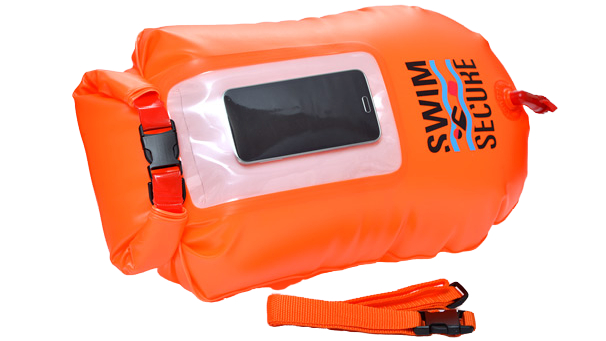
11. Swim Secure Window Dry Bag 28L
Specifications
Reasons to buy
Reasons to avoid
A multi-function swimming tow float that gives high visibility when in the water, the Swim Secure provides 18kg of positive buoyancy for ‘hugging’n’resting’ and is a 28-litre dry bag to boot. On test, that was big enough to take a micro-fleece towel, warm layers, light shoes and any other kit that might be needed when swimming and walking down and up a river or heading point to point on a coastal dip. A pocket with a touchscreen-usable transparent window in the bag’s outer skin can take a large phone or GPS unit, though I’d double-bag anything precious or hydrophobic stored here.
Avoiding user error when closing any dry bag is key, and you need to pay extra attention with a swim bag; don’t overfill the bag, roll the mouth down to the marked area before clipping it closed and, finally, inflate the front and back air chambers. The short leash attached to a clip-on waistband positions the bag where it doesn’t interfere with freestyle or breaststroke leg action while swimming, and even when filled, there’s negligible drag.
Best dry bag comparison table
Dry bag | Style | Weight | Capacity |
Sea to Summit Flow 35L Dry Pack | Backpack | 1,000g / 2lb 3oz | 35L |
Red Original Waterproof Backpack 30L | Backpack | 975g / 34oz | 30L |
Mustang Highwater 60L Gear Hauler | Backpack | 900g/2lb | 60L |
Matador Freerain Waterproof 24L Backpack | Backpack | 187g/6.6oz | 24L |
Sea to Summit Ultra-Sil Dry Bag 35L | Large dry bag | 65g/2.2oz | 35L |
Guy Cotten Waterproof Bag No 1 | Medium dry bag | 450g/16oz | 15L |
Mountain Warehouse PVC Dry Bag 10L | Medium dry bag | 250g/9oz | 10L |
Aquapac Trailproof Waterproof Waist Pack | Small, dual compartment waist pack | 370g/ 13oz | 3L |
Osprey Ultralight Dry Sack 6L | Small dry bag | 30g/1.1oz | 6L |
Overboard Large Map Case | Waterproof map case | 240g/8oz | N/A |
Swim Secure Window Dry Bag 28L | Swimming tow bag | 500g / 17.6oz | 28L |
How we test the best dry bags
Our reviewers test dry bags on trails in a range of environments and conditions, carrying various weights, ranging from multiday loads to day provisions. Features (including design, carry capacity, harness comfort, product weight, materials, and ease of access) are tested against claims made by the brand, and we assess factors such as value for money, durability and functionality.
Meet the testers

After a wild childhood in west Cork, Jasper Winn began embarking on long cycles, walks, horse journeys and kayak trips across five continents – adventures he’s decanted into books, magazine articles, radio and television documentaries. Keen on low-tech but good gear, Jasper is an advocate of slow adventures by paddle, pedal, saddle, boot and sail. He has circumnavigated Ireland by kayak and cycled across the Sahara. Twice. Having ridden north-to-south across Algeria he discovered the only way to get back was to turn round and pedal north again.
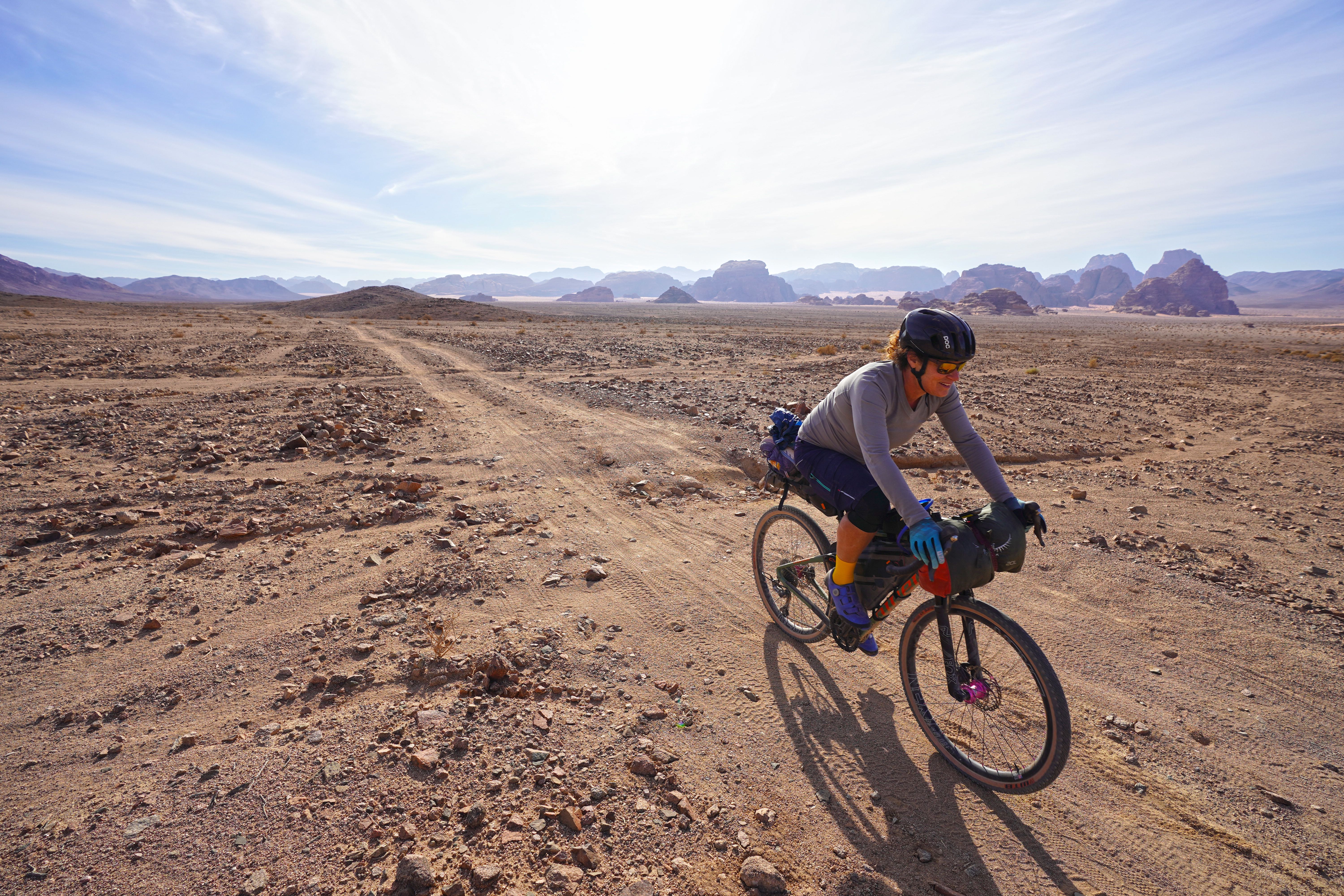
Vermont-based writer, photographer and adventurer, Berne reports on kayaking, hiking, biking, skiing, overlanding, travel and climbing for category-leading publications in the U.S., Europe and beyond. In the field, she’s been asked to deliver a herd of llamas to a Bolivian mountaintop corral, had first fat-biking descents in Alaska, helped establish East Greenland’s first sport climbing and biked the length of Jordan. She’s worked to help brands clean up their materials and manufacturing, and has had guns pulled on her in at least three continents.
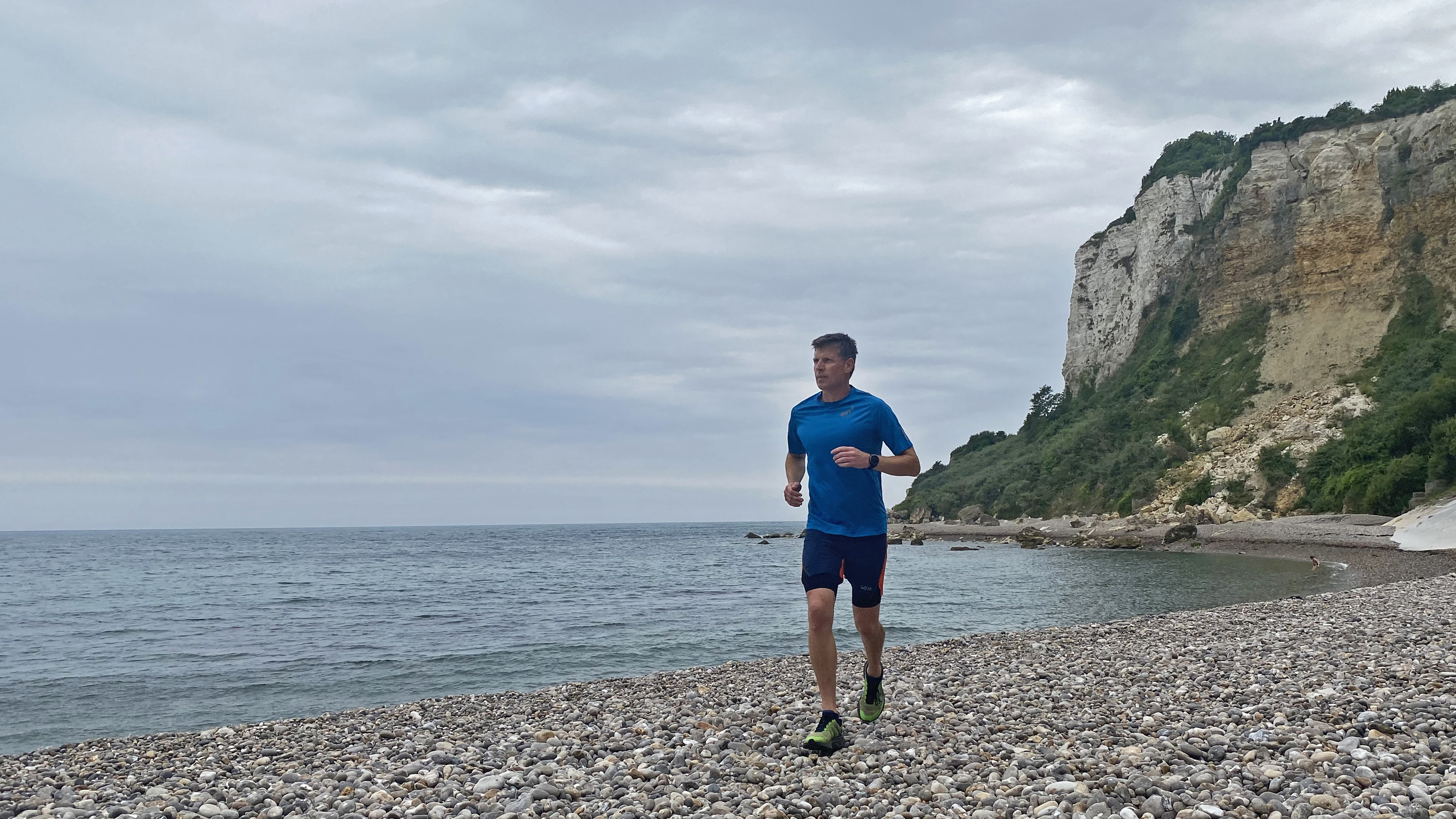
Writer, editor and enthusiast of anything involving boots, bikes, boats, beers and bruises, Pat has spent 20 years pursuing adventure stories. En route he’s canoed Canada’s Yukon River, skied and mountain biked through the Norwegian Alps, run an ultra across the roof of Mauritius, and set short-lived records for trail-running Australia’s highest peaks and New Zealand’s Great Walks. He’s authored walking guides to Devon and Dorset, and once wrote a whole book about Toilets for Lonely Planet. Follow Pat’s escapades here.
How to choose a dry bag
The best dry bag for you depends on your intended use. Some of the best dry bags take on the function of a daypack, while others are smaller, designed for individual items. A dry bag's applications are many and varied. Which one – or ones – you choose will depend on whether you're off thru-hiking, canoeing, ghyll scrambling (that's climbing up waterfalls for the uninitiated) in the English Lake District, camping or bikepacking.
Of course, if you're heading out on a canoe or kayak, dry bags are indispensable. You will probably want a large pack that you can just shove everything in for peace of mind.
When considering how to plan a backpacking adventure, think ahead to when and how dry bags will come in handy. Think about the climate your planned adventures are going to take place in. For example, if you're off to bag Scotland's Munros, the odds are that at some point you're going to experience driech (that's Scottish for 'a bit wet') conditions. You may want to get small dry bags for items like your phone, your spare hat and gloves and your spare socks. If you're wild camping, the last thing you want is a wet sleeping bag. Compression dry bags are your friend.
Dry bags are also an essential item on any camping checklist. As well as giving you peace of mind when it comes to your crucial items, old dry bags are great for sealing away your trash and carrying it out.
Size
The bigger the better holds true for choosing the best dry bags as performance can be compromised and waterproof closures rendered useless if bags are overfilled. This is where knowing exactly how to use a dry bag is so useful. Remember, too, that a proportion of a bag’s length is taken up by the minimum of three folds needed for roll-over and clip systems.
Overfilled bags, especially if they hold hard items, can abrade and hole just with the movement and rubbing of a day’s walking. Ideally carry a range of sizes in lightweight bags, as this also helps with sorting and ordering contents whether in a backpack, cycle panniers or a kayak’s compartments.

Materials
As always there’s a trade off between lightweight and heavy-tough. Sea to Summit’s Ultra-Sil and Ospreys Ultralight bags are almost weightless but need to be protected inside other bags, whilst heavier materials like the PVC/PES in Guy Cotton’s kit bag, and Aquapac’s heavy vinyl are stand-alone rugged – though they still need to be kept from the kind of concentrated abrasive rubbing in one spot (bike racks, kayak tie-down points and even backpack straps can all do the damage) that can erode a hole through the toughest fabrics in a very short time.
I used a range of dry bags over a thousand miles of seakayaking on a circumnavigation of Ireland; waterproofing failures were few but where they occurred were either holes worn between bags and hard surfaces, or – too often – user error. Coated fabrics will ultimately delaminate (although it usually it takes years if bags are looked after properly), which will compromise their waterproofing; those bags can be down-cycled into less critical but still useful roles like carrying sooty cooking pots or as rubbish carry-out bags.
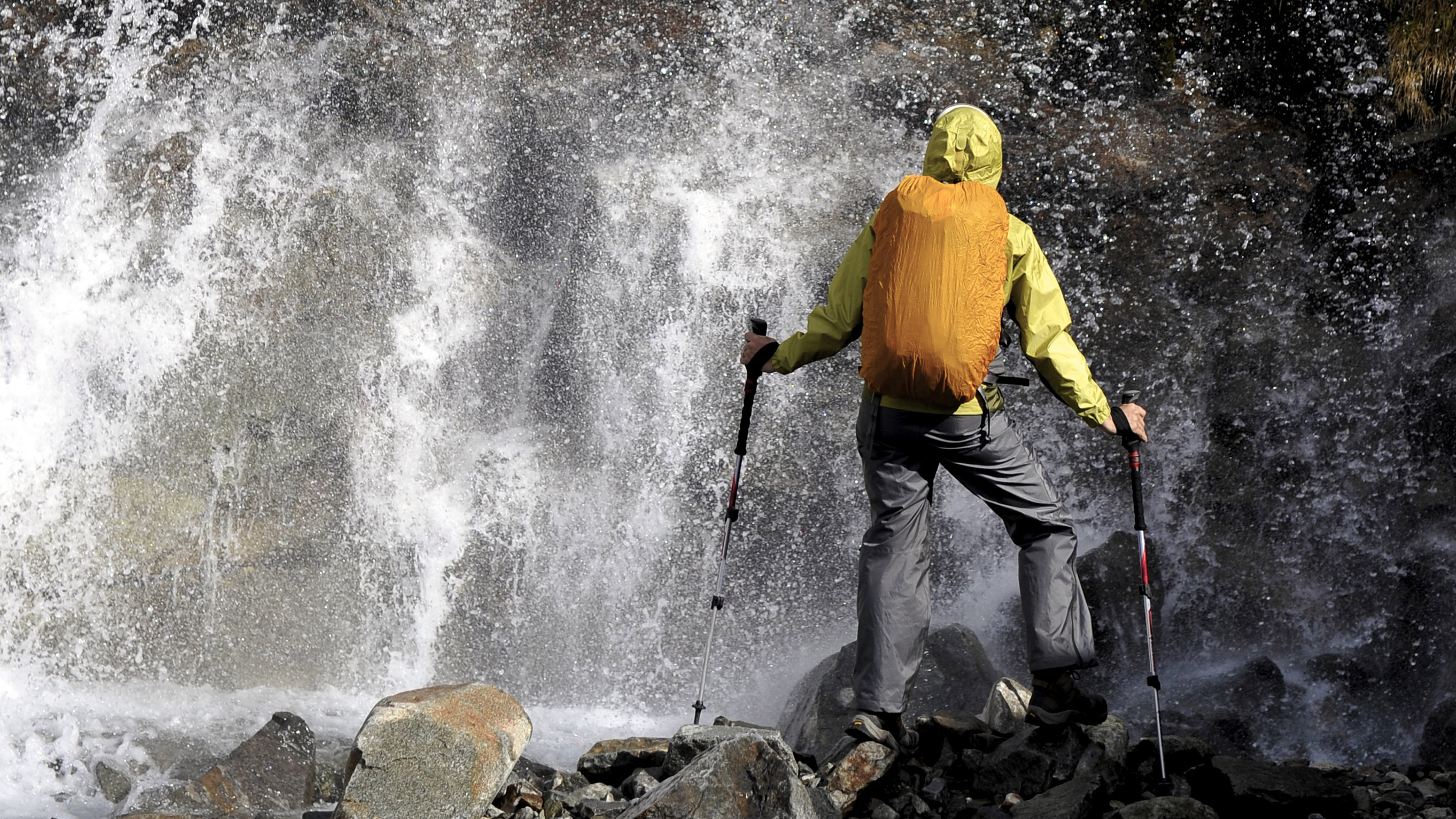
Features
Simplicity is key to functionality in the best dry bags. The simpler a bag is the more reliable it will prove in the field. Nonetheless, well thought out design features meeting real needs can be welcome. The shape or proportions of a bag can make it easier to pack, more efficient to fit in with other storage items or useful for holding particular items.
Any dry bag that might be stored loose will benefit from D-rings to tie it on with, especially if you’re on water, (in an allied point; if you’re putting heavy items – phones, GPSs and other electrics, particularly – in dry bags for canoeing or other water activities, add something light and bulky to give positive buoyancy; your smartphone waterproofed but at the bottom of a river is always a ‘D'oh!’ moment). Handles and shoulder harnesses for dry bags should be basic; if you need more carry comfort for longer hikes then you’re really in the market for a fully purposed waterproof backpack.
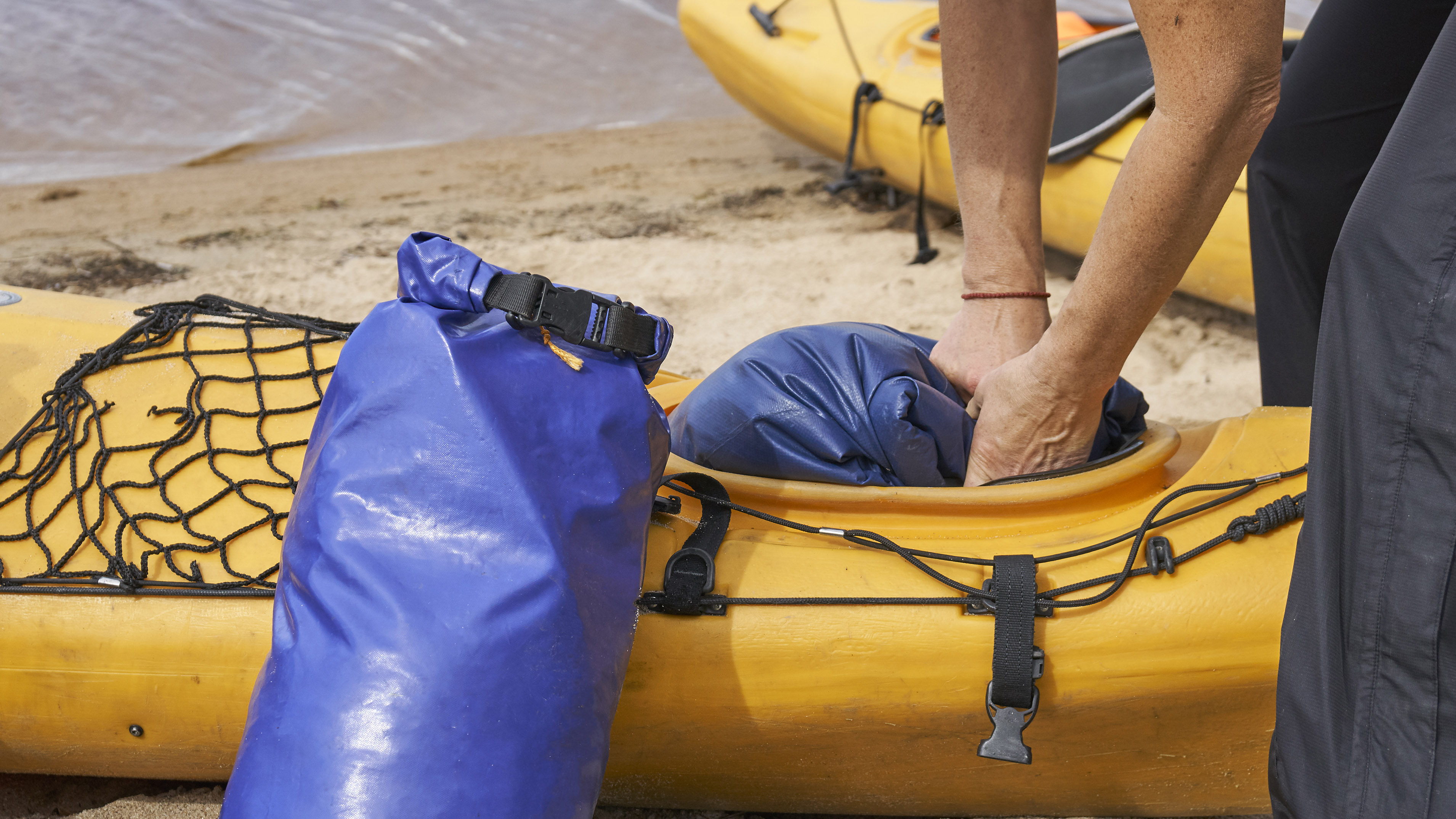
Versatility
Somewhat counter intuitively, the more basic a dry bag’s design the greater its versatility. The main function of keeping out water can be re-imagined to meet numerous other situations. So, waterproof also means snow-proof and protection from sand and dirt.
Keeping water out also means keeping water in; sometimes its easier to put your wet gear – rather than your dry gear – into a dry bag to separate the two, and many a backpacker has used a medium sized dry bag as a bucket to collect water – it works fine but doesn’t do the seams much good on lightweight bags. In extremis adventurers have used air-filled dry bags to get themselves and kit across rivers – though the Swim Secure bag is so much the safer and better option – and the largest bags can be sacrificed and turned into a basic waterproof jacket with a neck and two arm holes if that’s your only option in a survival scenario.
A 10L bag filled with soft clothing makes a good pillow. Chose a rucksack liner in bright orange and you’ve got a large inflatable signal which stands out against snow, vegetation, sand and water. A dry bag with some cushioning inside can become an insulated sit-mat, though you’ll wear them out quickly if you make a habit of it. Thinking up uses for dry bags is one of those games that can keep you occupied around a campfire at night, and so is a use for dry bags in itself.
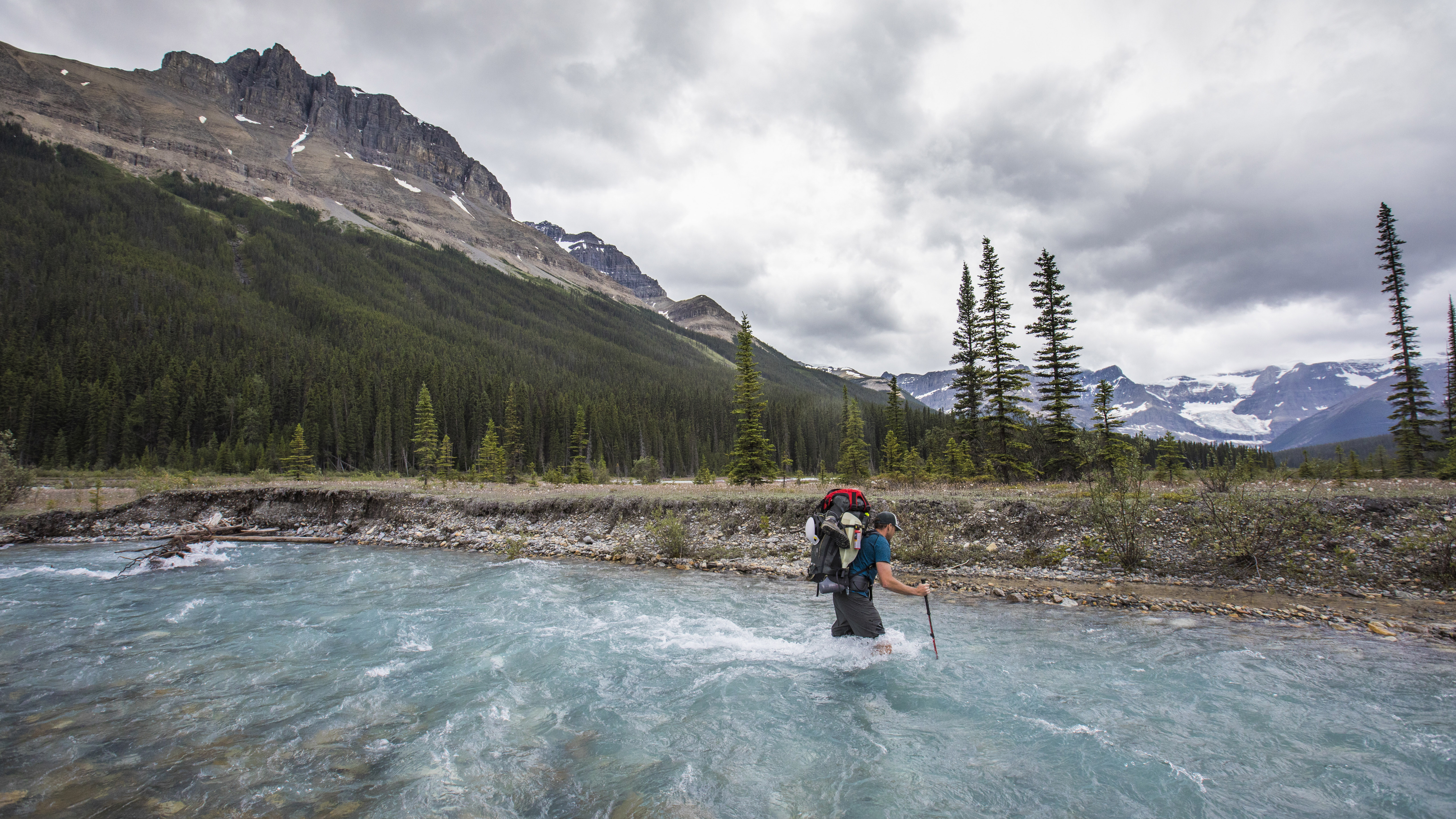
Price/value
If a dry bag ensures you have a cosy sleeping bag at the end of a day’s hiking in cascading rain or saves your phone from an end-of-life dunking, then it would be cheap at nearly any price, right? But the best dry bags are some of the best value kit when it comes to results for costs. Such good value that most experienced adventurers collect tens of them in all sizes and take their benefits for granted.
With a background in seakayaking, sailing, long bike rides and multiday hikes in wet weather and winter conditions, I’ve just counted up 23 different sizes, brands and designs of dry bag scattered and stored around my small live-aboard sailing boat, and I’m sure I could do with a few more. When it comes down to essential kit, dry bags aren’t sexy or full of technical wizardry. Instead they’re just good at protecting the more expensive, fragile and technical stuff that gets taken into the outdoors, and that’s enough to make them close to indispensible.
What to do with your old dry bag
Dry bags aren't easy to recycle due to the materials they're made from. If your old bag is still in good condition and nicely watertight, you could donate it to a local gear collective, which will be able to donate it to a person who'd otherwise be without. Gear collectives are usually small projects run by just a few people, so search for one in your local area.
If your bag has a few leaks, you can patch it up using Aquaseal (available from Amazon for around $9) rather than buying a whole new one.
- Best water shoes: for summer hikes and water sports
All the latest inspiration, tips and guides to help you plan your next Advnture!
After a wild childhood in west Cork, Jasper Winn began embarking on long cycles, walks, horse journeys and kayak trips across five continents – adventures he’s decanted into books, magazine articles, radio and television documentaries. Keen on low-tech but good gear, Jasper is an advocate of slow adventures by paddle, pedal, saddle, boot and sail. He has circumnavigated Ireland by kayak and cycled across the Sahara. Twice. Having ridden north-to-south across Algeria he discovered the only way to get back was to turn round and pedal north again.
- Berne Broudy
- Pat KinsellaAdvnture Consulting Editor
